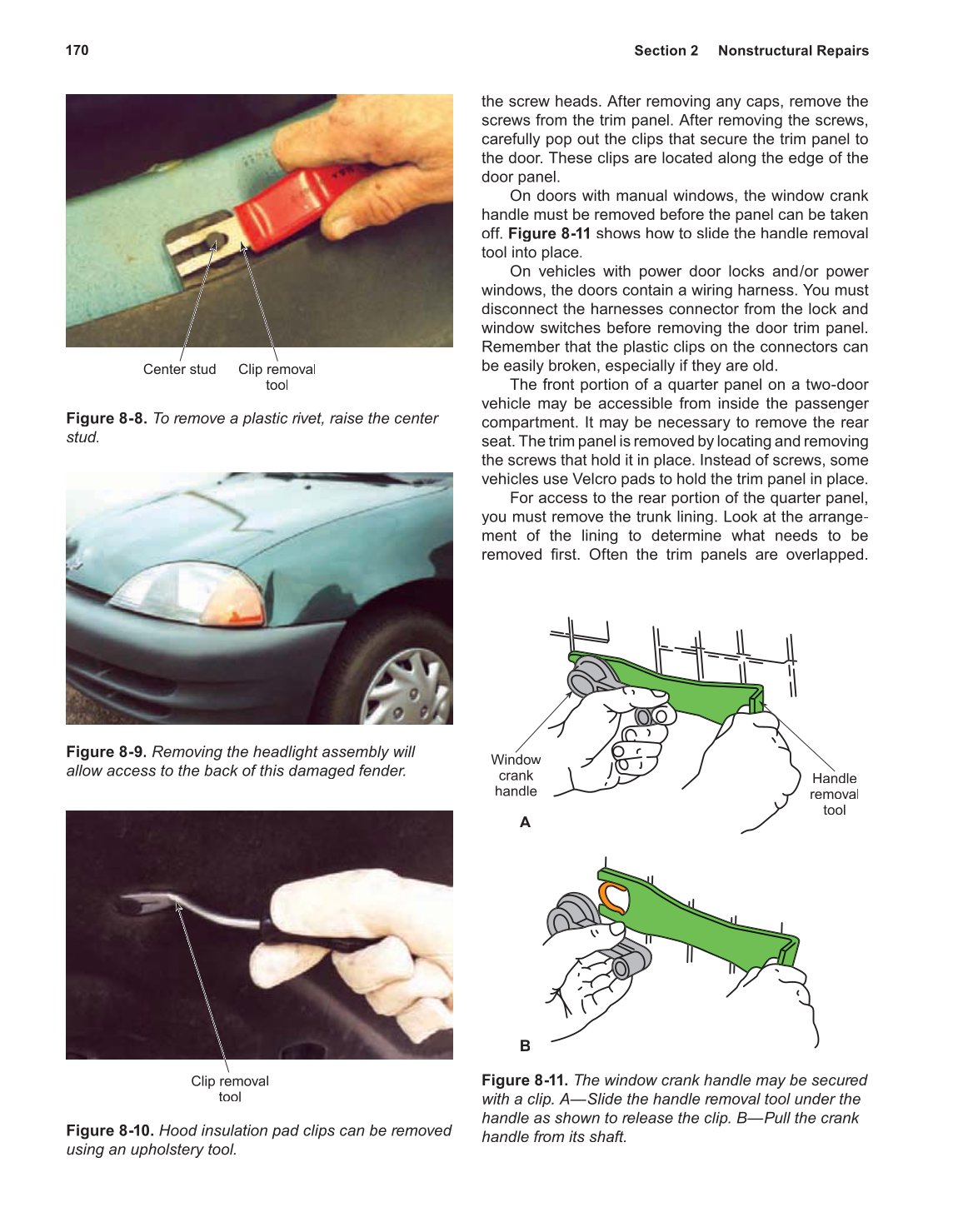170 Section 2 Nonstructural Repairs
the screw heads. After removing any caps, remove the
screws from the trim panel. After removing the screws,
carefully pop out the clips that secure the trim panel to
the door. These clips are located along the edge of the
door panel.
On doors with manual windows, the window crank
handle must be removed before the panel can be taken
off. Figure 8-11 shows how to slide the handle removal
tool into place.
On vehicles with power door locks and/or power
windows, the doors contain a wiring harness. You must
disconnect the harnesses connector from the lock and
window switches before removing the door trim panel.
Remember that the plastic clips on the connectors can
be easily broken, especially if they are old.
The front portion of a quarter panel on a two-door
vehicle may be accessible from inside the passenger
compartment. It may be necessary to remove the rear
seat. The trim panel is removed by locating and removing
the screws that hold it in place. Instead of screws, some
vehicles use Velcro pads to hold the trim panel in place.
For access to the rear portion of the quarter panel,
you must remove the trunk lining. Look at the arrange-
ment of the lining to determine what needs to be
removed first. Often the trim panels are overlapped.
Center stud Clip removal
tool
Figure 8-8. To remove a plastic rivet, raise the center
stud.
Figure 8-9. Removing the headlight assembly will
allow access to the back of this damaged fender.
Clip removal
tool
Figure 8-10. Hood insulation pad clips can be removed
using an upholstery tool.
A
B
Window
crank
handle
Handle
removal
tool
Figure 8-11. The window crank handle may be secured
with a clip. A—Slide the handle removal tool under the
handle as shown to release the clip. B—Pull the crank
handle from its shaft.
